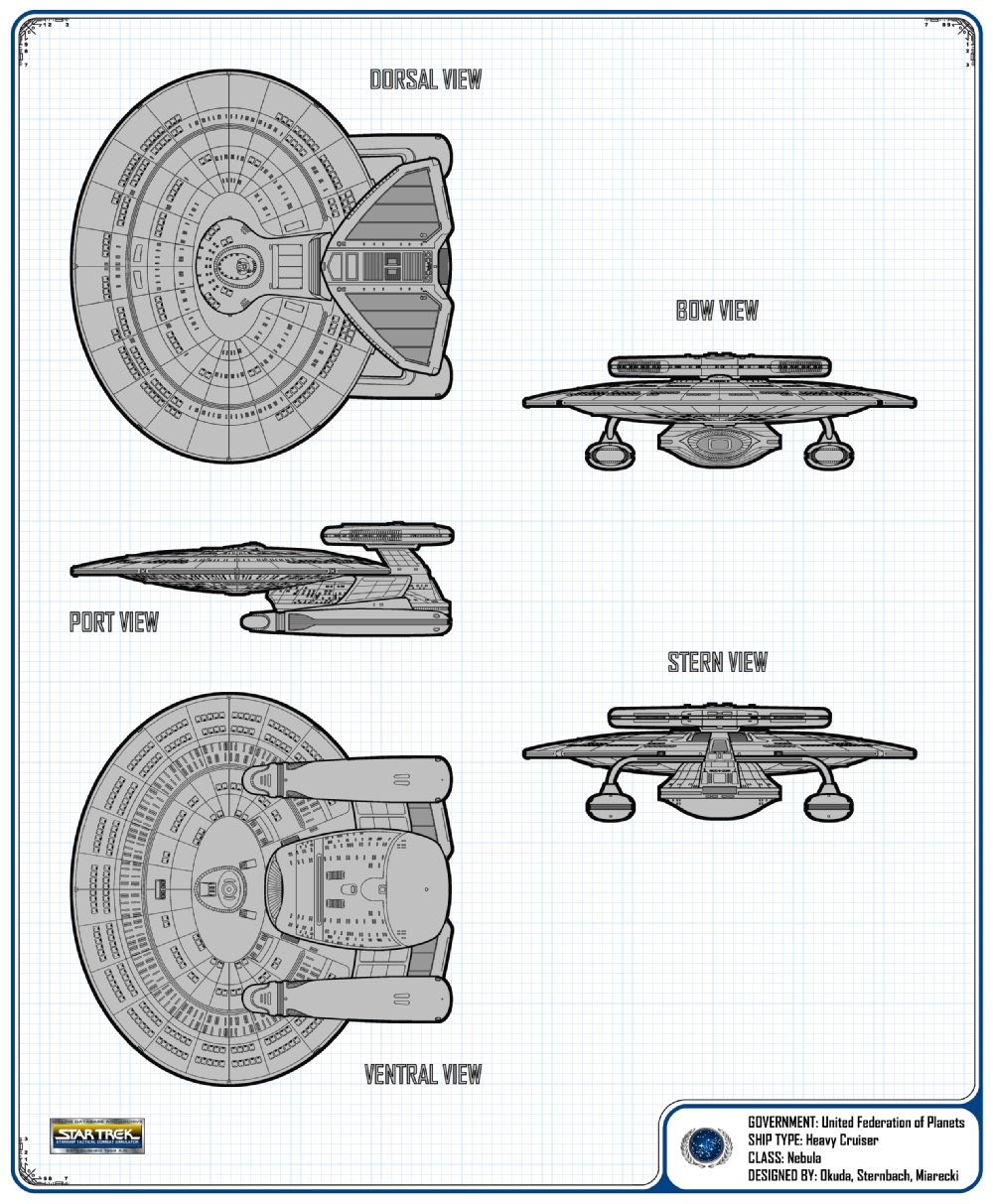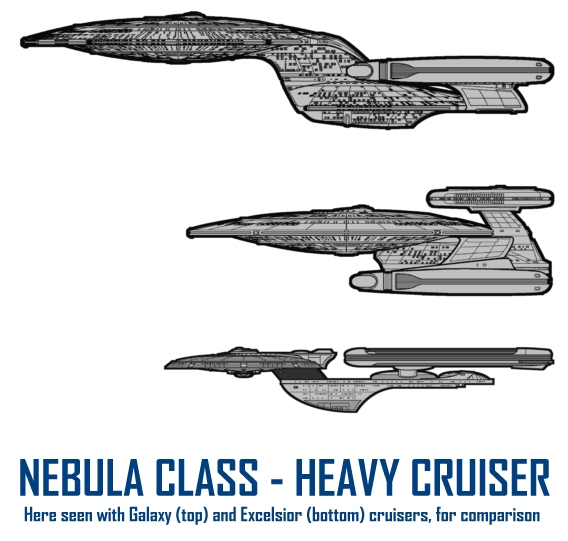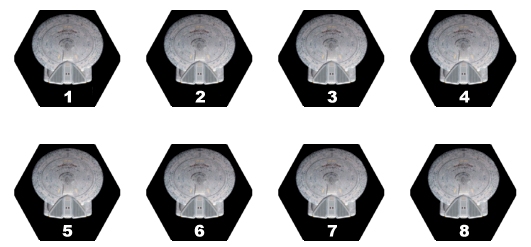![]()
Nebula Class ● Heavy Cruiser ● United Federation of Planets

CLICK ABOVE TO SEE A DOUBLE-SIZE BLUEPRINT
|
THE NEBULA CLASS IS TO THE GALAXY
CLASS AS THE Miranda/Soyuz/Reliant was to the
Constitution
Refit/Enterprise. Employing a saucer section and warp nacelles almost
identical to those of the the Galaxy, the Nebula also uses a similar design philosophy as the Miranda/Soyuz in
that the warp nacelles are slung underneath the saucer on downward-sloping pylons, and
there is a weapon/sensor structure projecting above the saucer behind the bridge. One of several new designs that would be created for
ST:TNG, the Nebula Class seems to be
broken down into two distinct types, distinguishable by the style of pod that they sport
above the ventral surface of the saucer. — BRT |

| Construction Data: Model Numbers- Ship Class- Date Entering Service- Number Constructed |
MK I * XVI classified classified |
MK II * XVI classified classified |
| Hull Data: Superstructure Points- Damage Chart- Size Length- Width- Height- Weight- Cargo Cargo Units- Cargo Capacity- Landing Capability- |
92 C 440 meters 467 meters 130 meters 361,400 tons 400 units 20,000 tons None |
100 C 465 meters 467 meters 130 meters 377,000 tons 400 units 20,000 tons None |
| Equipment Data: Control Computer Type- Transporters- Standard 6-person- Combat 20-person- Emergency 22-person- cargo large- cargo small- |
MBT-10 16 none 10 2 2 |
MBT-10 16 none 12 2 2 |
| Other Data: Crew- Passengers- Shuttlecraft- |
750 45 18 |
775 20 16 |
| Engines and Power Data: Total Power Units Available- Movement Point Ratio- Warp Core Type- Power Units Available- Stress Charts- Maximum Safe Cruising Speed- Emergency Speed- Impulse Engine Type- Power Units Available- |
136 5/1 FNWD-4B 88 K/F Warp 8 Warp 9.9 FNIS-420 48 |
149 5/1 FNWD-4C 94 K/F Warp 8 Warp 9.9 FNIS-430 55 |
| Weapons and Firing Data: Beam Weapon Type- Number- Firing Arcs- Firing Chart- Maximum Power- Damage Modifiers +3 +2 +1 Missile Weapon Type- Number- Firing Arcs- Firing Chart- Power To Arm- Damage- Missile Weapon Type- Number- Firing Arcs- Firing Chart- Power To Arm- Damage- |
FH-15 8 in collimated 'strips' 300+ degrees, all arcs at all times Y 12 (1 - 11) (12 - 20) (21 - 24) FP-4 10 3f/p, 3f/s, 4a S 1 20 |
FAHW-24 14 in collimated 'strips' 300+ degrees, all arcs at all times V 16 (1 - 8) (9 - 15) (16 - 21) FP-4 8 3f/p, 3f/s, 2a S 1 20 FP-17 (weapons pod) 10 4f/p, 4f/s, 2a X 3 27 |
| Shields Data: Deflector Shield Type- Shield Point Ratio- Maximum Shield Power- |
NGSS-G 1/3 24 |
NGSS-I 1/3 30 |
| Defense Factor- Weapon Damage Factor- |
281.6 ** 226.6 ** |
314 ** 486.2 ** |
* Denotes completely hypothetical
model number and stats, devised by Brad R. Torgersen.
** D and WDF numbers provided by Bryan Jecko.
Thanks Bryan!

CLICK HEX GAME PIECES TO VIEW AND PRINT SEPARATELY